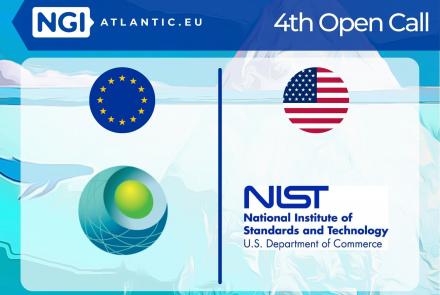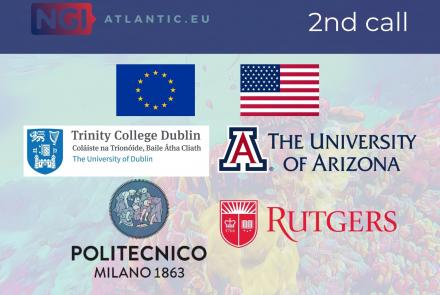The NGIAtlantic.eu project has ended in February 2023. For the follow-up initiative, visit NGI Transoceanic.

Project Coordinator (EU) :
National University of Ireland GalwayCountry of the EU Coordinator :
IrelandOrganisation Type :
AcademiaStarting date :
BONSAI:cross-Border experiments for OpeN data testbedS interconnection for Atlantic Interoperability Experiment
Experimental Platform interconnections
The Next Generation Internet should support large amounts of distributed data to facilitate big data processing and storage; AI solutions and Recommender Systems are examples of services that would benefit from this approach; however, the gap resides in the methods to classify, identify, access, and share the data over the Internet.
EU-USA BONSAI is a collaborative cross-Border testing framework for running experiments that works over large amount of open data for optimal access, using holistic methods to classify, identify and access data and utilizes its designed service data access applications towards facilitating that information frameworks and data testbeds can provide data portability and interoperability.

Project Coordinator (EU) :
Technological University DublinCountry of the EU Coordinator :
IrelandOrganisation Type :
AcademiaStarting date :
ATLANTIC-eVISION: Cross-Atlantic Experimental Validation of Intelligent SDN-controlled IoT Networks
Discovery and identification technologies
This project will perform experiments on public testbeds to establish the feasibility of applying OpenFlow and SDN in wireless IoT networks through five experiments: (1) automatic configuration/discovery of SDN in wireless IoT sensor networks, (2) ML- assisted control and data traffic path discovery experiments, (3) GPU and Hadoop cluster assisted experiments for ML algorithms, (4) Failure recovery intercity experiments, and (5) Scalability experiments. The US and the EU teams will provide expertise for experimentation on their respective testbeds. Also, both teams will integrate machine learning-assisted SDN control into IoT, allowing cross-Atlantic experimentation to "stress-test" the project’s novel algorithms.

Project Coordinator (EU) :
Trinity College DublinCountry of the EU Coordinator :
IrelandOrganisation Type :
AcademiaIntegrating OpenIreland and COSMOS testbeds for delivering a cross-Atlantic Open Networking Solution
Experimental Platform interconnections
The vision of the project is to develop a federation and control plane framework for OpenIreland that is compatible with COSMOS, so that users can easily move from one testbed to the other. COSMOS has already developed some of these tools, which will be transferred by our team to OpenIreland. This project will enable European researchers to better interface with the international collaboration capabilities of COSMOS, under development in the COSMIC project. Two experiment were designed to showcase this possibility and to provide a user guide for other future experimenters.
